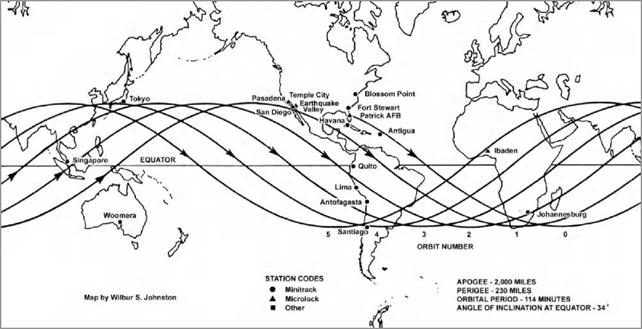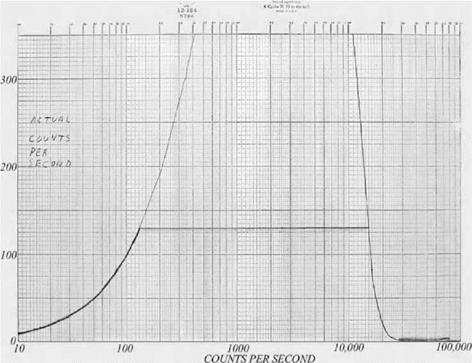During the last two years of the 1950s, the space program advanced rapidly, both in terms of the technology and of the science. The growing experience and confidence of the Soviet and American technicians and scientists, combined with the increasing
|
CHAPTER 14 • EXTENDING THE TOEHOLD IN SPACE
|
|
|
|
|
|
|
10, DEVICE FOR MEASURING
THE INTENSITY OF PRIMARY C05MI RADIATION
|
|
|
5. MAGNETIC AND IONIZATION
MANOMETERS
6. ION CATCHERS
7. ELECTROSTATIC FLUXMETER *. MASS SPECTROMETRIC TUBE
9. DEVICE FOR THE REGISTRATION OF HEAVY NUCLEI IN COSMIC RAYS
|
|

2. PHOTO-MULTIPLIERS FOR THE
 REGISTRATION OF THE CORPUSCULAR RADIATION OF THE SUN
REGISTRATION OF THE CORPUSCULAR RADIATION OF THE SUN
3. SOLAR BATTERIES
4. DEVICE FOR THE REGISTRATION OF PHOTONS IN COSMIC RAYS
FIGURE 14.5 Sputnik 3, with identification of its major features. Weighing nearly 3000 pounds and measuring nearly 12 feet long and 6 feet in diameter, it was gigantic in comparison with early U. S. satellites. (Courtesy of the National Aeronautics and Space Administration.)
weight-carrying capability of U. S. launch vehicles, led quite naturally to spacecraft of increasing size, capability, and complexity.
Some of the spacecraft of that period are referred to as second-generation spacecraft, distinguished by the inclusion of multiple primary instruments that made increasingly discriminating measurements. In many cases, instruments were complementary in nature, carefully chosen to address specific questions.
Sputnik3 Sputnik 3, discussed earlier in Chapter 12, with its immense weight and array of scientific instruments, was the first of the second-generation spacecraft. A full-blown automatic scientific laboratory, the Soviets originally planned that it would be carried on their first satellite launch attempt. Problems with payload development and the resulting launch postponements led to the preparation and earlier flight of the simpler Sputniks 1 and 2.
This spacecraft was indeed remarkable. Launched on 15 May 1958, it carried, in a single carrier, more instruments than had been planned for the entire U. S. Vanguard program. Illustrated in Figure 14.5, the spacecraft was designed to investigate the pressure and composition of the upper layers of the atmosphere, the concentration of positive ions, the magnitudes of the electric charge of the Sputnik and of the Earth’s electrostatic field, the magnitude and direction of the Earth’s magnetic field,
OPENING SPACE RESEARCH
 the intensity of the Sun’s corpuscular radiation, the composition and variation of primary cosmic radiation, the distribution of the photons and heavy nuclei in cosmic rays, and micrometeors.
the intensity of the Sun’s corpuscular radiation, the composition and variation of primary cosmic radiation, the distribution of the photons and heavy nuclei in cosmic rays, and micrometeors.
Sputnik 3 provided a wealth of new information. Reaching higher latitudes than the earliest U. S. Explorers, it traveled through the lower north cusp of the outer radiation belt. It helped put to rest scientists’ early fears that micrometeorites might be dense enough to seriously impede our ventures into space. Important results related to the geomagnetic field, low-energy ions, and electrons in the far atmosphere and near space and related to cosmic rays were obtained from this mission.10
Explorer 6 Explorer 6 was the second highly successful second-generation spacecraft, and the first one by the United States. It was a spheroidal satellite with four solar paddles designed to study a wide range of geophysical and astrophysical phenomena. The arrangement of components within the central cylindrical platform is shown in Figure 14.6.
Whereas the Explorer I, III, and IV and Sputnik 1 and 2 orbits all lay within 1800 miles of the Earth’s surface, and therefore barely edged into the high-intensity radiation belts, the highly eccentric Explorer 6 orbit was another matter. It laced through the entire region of high-intensity radiation from 152 to 26,350 miles and from north 47 degrees to south 47 degrees, making 113 passes through the outer belt during its operating lifetime.
The spacecraft was another product of STL. They had already built and launched Pioneer 0 (Thor-Able 1), Pioneer 1, and Pioneer 2—Explorer 6 was an evolutionary extension of that work. All those early STL missions were initiated by the Air Force’s Ballistic Missile Division, when the three armed services were still vying for major roles in space, i. e., before NASA was formed in October 1958 to head the civilian space program.
Explorer 6 represented a major advance in the development of U. S. spacecraft technology and scientific research. Launched on 7 August 1959 by a Thor-Able-3 vehicle from Cape Canaveral, it weighed 141 pounds. One of its major objectives was to develop and test technologies that would be needed for deeper space flight, including journeys of millions of miles into interplanetary space. Long-term electrical power generation and data transmission over great distances were major challenges that guided some of the design considerations. Solar power generation coupled with storage batteries provided the electrical power. An onboard receiver facilitated Doppler tracking, fired the injection rocket, changed the rate of data transmission, turned on a simplified television system, and performed other functions. Three data transmitters were used—one operated intermittently with a five watt output for tracking and digital data transmission. It was designed so that it would be able to drive a 150 watt amplifier on future deep space missions. Two other transmitters radiated continuously
|

FIGURE 14.6 Top and bottom views of the main instrument shelf in Explorer 6. A quasihemispheric dome covered the top of this short cylinder, with a truncated dome on the bottom. Extending outside the cylindrical center section shown here were four paddles containing an array of solar cells to serve as the primary power source—the satellite was often referred to as the paddle wheel satellite. The cylindrical structure shown here measured 29 inches in diameter, and the overall satellite height was 26 inches. (Courtesy of the U. S. Air Force.)
|
OPENING SPACE RESEARCH
 at 100 milliwatts for analog data transmission. Since similar data were conveyed by the digital and analog systems, the older and more proven analog system was used primarily to monitor the performance of the new “Telebit” digital system that fed the higher-power transmitter.
at 100 milliwatts for analog data transmission. Since similar data were conveyed by the digital and analog systems, the older and more proven analog system was used primarily to monitor the performance of the new “Telebit” digital system that fed the higher-power transmitter.
The ambitious scientific program rivaled that of the Soviet Sputnik 3 program, in spite of Explorer 6’s smaller size and lighter weight, through its use of low-power miniature transistor electronics throughout. With this and the first Pioneer mission, the Air Force (and NASA, once it was formed) provided an opportunity for a new group of experimenters beyond those of us associated with the earlier Vanguard and Juno programs. A team under Robert (Bob) A. Helliwell, L. H. Rorden, and R. F. Mlodnosky at Stanford University provided a Very Low Frequency Receiver and studied the whistler phenomenon and radio propagation through the ionosphere. Carl D. Graves of STL studied electron density above the ionosphere by radio propagation measurements from the UHF and VHF transmitters.
Manring and Dubin at the Air Force Cambridge Research Center continued their earlier work by providing an impact microphone-type micrometeorite detector. Fluxgate and spin-coil magnetometers were developed, and their data were analyzed by an STL team that included Charles P. Sonett, Edward J. Smith, Paul J. Coleman Jr., J. W. Dungey, D. J. Judge, and A. R. Sims. They provided new information on the overall structure of the geomagnetic field and of its temporal variations.
A pair of instruments consisting of an ionization chamber and GM counter was provided by a team at the University of Minnesota headed by John R. Winkler and including Roger L. Arnoldy and Robert A. Hoffman. That group produced a set of rather complete contours of constant counting rate and radiation dosages. Interestingly, the contours displayed a shape quite different from those that we had deduced at Iowa at an earlier time. Their work helped to stimulate a period of energetic research during the next few years to better understand the trapping mechanism, injection and decay processes, and effects of solar variability.
A group at the University of Chicago provided a wide-angle, triple-coincidence, semiproportional particle telescope to investigate the solar modulation of cosmic radiation and the origin and structure of the Van Allen belts. That group was headed by John A. Simpson and included Charles Yun Fan and Peter Meyer at Chicago and Wilmot N. Hess and J. Killeen at the Lawrence Radiation Laboratory in California.
A scintillation counter was prepared by a team at STL consisting of Tom Farley, Al Rosen, and N. L. Sanders to examine the energy spectra of electrons and protons. STL also provided an image-scanning television system. It obtained very low resolution pictures of the Earth that were a precursor to later cloud cover-observing instruments.
CHAPTER 14 • EXTENDING THE TOEHOLD IN SPACE 411
An array of instruments was provided by STL to measure satellite orientation and various engineering parameters. Finally, a group of scientists used the orbit data for studies of lunar and solar perturbations, atmospheric drag, and effects due to ellipticity of the Earth’s equator. Those individuals included Yoshihide Kozai and Charles A. Whitney from the Smithsonian’s Astrophysical Observatory; Kenneth Moe from STL; and A. Bailie, Peter Musen, E. K. L. Upton from the Naval Research Laboratory.
Explorer 7 As mentioned in Chapter 10, serious planning for a second-generation U. S. satellite began as early as March 1958, buoyed by the elation over the successful Explorer I launch. It envisioned retaining the Juno I upper-stage arrangement but substituting the larger Jupiter Rocket for the Redstone first-stage booster, thereby substantially increasing the weight-lifting capability.
Initial planning by the Huntsville and Pasadena engineers and Washington officials proceeded at a rapid pace, and an experiment complement was soon identified. The Huntsville and Pasadena crews initially referred to that satellite as the International Geophysical Year (IGY) Heavy Payload, although the name Payload 8 (PL-8) was sometimes used. It was to include a package for continuation of our original University of Iowa cosmic ray research objective, and that objective was quickly upgraded to follow up on the radiation belt discovery. The other experiments included a Solar X-ray and Lyman-Alpha Photometry Experiment under Herbert Friedman’s leadership at the Naval Research Laboratory (NRL), a Radiation and Heat Balance Experiment by the University of Wisconsin group consisting primarily of Verner Suomi and Robert Parent, and a Heavy Cosmic Ray Experiment using an ionization chamber developed at the Glenn L. Martin Company’s Research Institute for Advanced Studies in Baltimore, Maryland, under the leadership of Gerhardt Groetzinger. Several engineering experiments were also included.
Primary support for the IGY Heavy Payload during the pre-NASA era was provided by the U. S. National Academy of Sciences, which renamed the embryonic satellite Payload 16 (PL-16). Presumably, that was because it was the sixteenth U. S. mission (both successful and unsuccessful) that carried the IGY banner. NASA, upon its formation, took over responsibility for the project and renamed it Satellite 1 (S-1), or the first in the series of NASA managed satellites. Its final name after launch became Explorer 7.
The original plan was to launch this satellite (seen in Figure 14.7) in mid-1958. Our initial schedule at Iowa called for delivery of a first flight cosmic ray instrument to Huntsville on 1 May. The initial schedule began to slip as the more urgent work on Explorers IV and V began to dominate the attention of everyone at Huntsville, Pasadena, and Iowa City. Further delays occurred as the Huntsville and Pasadena teams shifted to preparation for the Pioneer 3 and 4 shots.

A first attempt to launch S-1 did not occur until 16 July 1959. At liftoff, the power supply for the guidance system failed, and the vehicle was destroyed by the range safety officer 5.5 seconds later. Of course, by that time, the vehicle was barely off the ground, and the destruct command spilled the entire load of fuel and oxygen onto the launch pad. An enormous fire resulted, and those of us in the blockhouse remained sealed there for over an hour as the firefighting crew fought to bring it under control. The blockhouse blast door was ultimately opened, and we emerged to see the wreckage of the vehicle and our payload strewn around the area. I recovered the charred and melted remains of my cosmic ray instrument and a few other bits and pieces, which I retained until turning them over to the Smithsonian’s Air and Space Museum several years ago. Ernst Stuhlinger and I also examined a four foot rattlesnake that had been cooked by the conflagration.
Nearly three months elapsed before a second launch could be attempted. That happened on 13 October 1959, with a picture perfect launch of Explorer 7. The new
CHAPTER 14 • EXTENDING THE TOEHOLD IN SPACE 413
satellite was placed in an orbit that ranged from 356 to 667 miles in height, high enough that the satellite is still orbiting the Earth 50 years later. Its orbital inclination was about 50 degrees, carrying the satellite far enough north and south to provide valuable new information about the Earth’s trapped radiation.
Suomi and Parent’s heat balance instrument worked perfectly. It initiated the era of satellite studies of the Earth’s climate. Using both satellite observations of the Earth’s heat balance and atmospheric cooling rates measured by net flux radiosondes, Suomi was able to establish the important role played by clouds in absorbing radiated solar energy. Those observations established that Earth’s energy budget varies markedly due to the effect of clouds, the surface albedo, and other absorbing constituents. Using these instruments, Suomi and his team discovered that the Earth absorbed more of the Sun’s energy than originally thought and demonstrated that it was possible to measure and quantify seasonal changes in the global heat budget.
By the time of the Explorer 7 launch, Gerhardt Groetzinger, originator of the Heavy Cosmic Ray Experiment, had died. Martin A. Pomerantz, of the Bartol Research Laboratory, took over the experiment and published results in several papers.11
The twin-GM counter cosmic ray instrument was developed by the author, with major assistance by Bill Whelpley. Graduate student John W. Freeman calibrated the counters. The experiment’s purposes were to provide a “comprehensive spatial and temporal monitoring of total cosmic ray intensity, the geomagnetically trapped corpuscular radiation, and solar protons.” It operated for more than 17 months, broadcasting its data on two frequencies: 108.00 MHz and 19.994 MHz. That second transmitter was set to the low frequency, with a relatively high output power level of 0.6 watt, in order to make it easy for widespread participation in data recovery by radio amateurs and other interested persons.
The particle measurements from our instrument were somewhat anticlimactic. By the time the satellite had finally been launched, Explorer IV, also with a high orbital inclination, had already provided key information on the structure of the lower fringes of the radiation belts. More discriminating instruments for mapping the radiation belts, identifying the causative particles, and learning of their energy spectra had been operated on Sputnik 3 and Explorer 6. Furthermore, the wide-ranging orbit of Explorer 6 and deep space trajectories of Pioneers 3 and 4 had extended the observations much farther into space. Nevertheless, the Explorer 7 counters provided good observations of short – and long-term temporal variations over a relatively long period, from launch on 13 October 1959 to early March 1961.
Brian O’Brian joined our group as an assistant professor in August 1959 and became a major player in the Explorer 7 analysis effort.12
Vanguard III Vanguard III, launched on 18 September 1959, used the seventh and last launcher built under Navy aegis for the IGY. Somewhat heavier than
OPENING SPACE RESEARCH
 the earlier Vanguards due to an improved final-stage rocket, at a bit over 50 pounds, it carried three primary instruments, a magnetometer by Jim Heppner and his group at GSFC to measure the shape and intensity of the Earth’s magnetic field, an array of micrometeorite and other environmental sensors by Herman E. LaGow and his group at GSFC, and a pair of ionization chambers by Herb Friedman and his group at NRL to measure the Sun’s X-ray and ultraviolet emissions.
the earlier Vanguards due to an improved final-stage rocket, at a bit over 50 pounds, it carried three primary instruments, a magnetometer by Jim Heppner and his group at GSFC to measure the shape and intensity of the Earth’s magnetic field, an array of micrometeorite and other environmental sensors by Herman E. LaGow and his group at GSFC, and a pair of ionization chambers by Herb Friedman and his group at NRL to measure the Sun’s X-ray and ultraviolet emissions.
The thousands of magnetic field measurements obtained during its 84 day period of operation provided a charting of the Earth’s magnetic field with an accuracy far greater than hitherto achieved.13 Furthermore, the magnetometer’s measurements of very low frequency signals known as whistlers yielded estimates of electron densities in the high atmosphere.
The impact rate of interplanetary matter was highly variable. No penetrations of the satellite’s shell were detected, and the impact rate was found to be low enough so as to present only a minor hazard to future spacecraft. Even at that, analysis of readings from the micrometeorite detectors put the accumulative influx of cosmic dust impinging upon the Earth at an impressive figure of about 10,000 tons a day.
The experience gained in the Vanguard program led to a long series of Explorer and Interplanetary Monitoring Platforms at the new GSFC in Greenbelt, Maryland, that continued until the recent past. Those craft provided opportunities for scientists who had cut their teeth on Vanguard to continue their work and for a fresh wave of emerging scientists to join in the grand adventure.
Pioneer 5 Pioneer 5 was a continuation by the Air Force, NASA, and STL of the work begun with Pioneers 0, 1, and 2. Its primary purposes were to further develop the technology needed for deep space operation and to make scientific measurements in space at a distance well removed from the Earth’s influence. The structure, solar paddle arrangement, and weight (about 95 pounds) were all generally similar to those of the earlier missions, and the scientific instruments were furnished, by and large, by the same group of experimenters. The previously anticipated 150 watt amplifier was added to provide the radiated power needed for long-distance interplanetary communication.
Pioneer 5 was launched on 11 March 1960 into an orbit around the Sun lying between the orbits of Venus and Earth. Its apoapsis (greatest distance from the Sun following its final orbital injection) was 0.993 astronomical unit (AU) and its peri – apsis was 0.706 AU. It requires 311.6 Earth days for each complete circuit around the Sun.
Data were received from the craft at 64, 8, and 1 bits per second, depending on distance from the Earth and the size of the receiving station antennae. Most of the
CHAPTER 14 • EXTENDING THE TOEHOLD IN SPACE 415
telemetered data were recovered by the radio telescope at Jodrell Bank Observatory in England and by a tracking station in Hawaii. Useful data were received from the spacecraft for 50 days until 30 April, after which telemetry noise and weak signal strength made useful reception impossible. During the operational period, the high-power transmitter was commanded on about four times each day for 25 minutes duration each time. A new distance record was set for radio reception in interplanetary space when Jodrell Bank received a faint but readable signal from over 22 million miles away.
The mission provided the first measurements of the magnetic field in deep interplanetary space and of its variations. Most notably, it found that the field did not drop to zero at distances well removed from the Earth but that the Sun’s field remained detectable there. It also measured solar flare particles and cosmic radiation in the interplanetary region.
S-46 It must be noted that throughout the rest of the 1950s, both the Soviets and Americans continued to have a substantial number of disappointing launch failures. One of those was the satellite that we built at Iowa as project S-46. The S-46 mission had a special significance for me, as the project served as the subject for my Ph. D. thesis in electrical engineering.14
This was the second spacecraft that was largely university built, following on the heels of the State University of Iowa’s earlier Explorer IV (and failed Explorer V). The scientific objectives were chosen to examine a manageable subset of the many then – prevailing questions about the high-intensity radiation belt structure and composition. For that purpose, the satellite was designed for an orbit with a high eccentricity and inclination.
Specifically, with that satellite, we hoped to achieve the following:
• monitor the intensity structure of the two principal zones of geomagnetically trapped radiation over an extended period to help establish the origins and gross dynamics of the two zones
• study the correlations with solar activity and with various geophysical phenomena such as aurorae and magnetic storms
• study the particle composition and energy spectra of the respective components
• make a first exploratory study of the energy flux of very low energy trapped particles by use of zero-wall-thickness detectors
Built with NASA support, with Les Meredith at GSFC serving as the payload supervisor, our Iowa group did the overall mission and spacecraft design and designed and built the scientific instruments. The major working partners were, again, our friends at the Army Ballistic Missile Agency (later NASA’s Marshall Space Flight Center), who built the spacecraft mechanical structure, battery, solar power system,
OPENING SPACE RESEARCH
 FIGURE 14.8 The S-46 satellite payload. The central cylinder was the familiar six inch in diameter instrument container, with the detectors in the portion that protrudes from the top of the cubical solar cell array. The black circles on the top plate of the cylinder are some of the openings for the detectors.
FIGURE 14.8 The S-46 satellite payload. The central cylinder was the familiar six inch in diameter instrument container, with the detectors in the portion that protrudes from the top of the cubical solar cell array. The black circles on the top plate of the cylinder are some of the openings for the detectors.
and telemetry system. They also handled all aspects of the launch vehicle preparation and launch.
I continue to marvel at the wonderfully pleasant and productive working environment that existed between our groups. Individuals there with whom I worked closely on this mission, in addition to Ernst Stuhlinger, were Josef Boehm, H. Burke, Charles Chambers, Gerhardt Heller, Hans Kampmeier, Fred Speer, Sam Stevens, Art Thompson, and Hermann Wagner.
Tracking and telemetry reception was to have been done by a network of NASA stations that would have provided about 90 percent recovery from the highly eccentric orbit. My primary interface there was, again, John Mengel at GSFC.
The instruments included a pair of cadmium sulfide solid state detectors, two GM counters in an electron magnetic spectrometer arrangement, and a third GM counter to establish data continuity with the measurements from Explorers I, III, and IV.
CHAPTER 14 • EXTENDING THE TOEHOLD IN SPACE 417
The detectors were designed, prepared, and calibrated by a group of rising students. John Freeman led the CdS detector effort, assisted by Guido Pizzella, James (Jim) D. Thissell, and Carl McIlwain. Curtis (Curt) D. Laughlin took the electron spectrometer assembly, and Lou Frank led the GM counter calibration effort. Wonderfully effective engineering support was provided by students H. Kay McCune, Bill Whelpley, and Donald (Don) C. Enemark.
The mechanical components of the payload were machined in the department instrument shop by Ed Freund, Robert (Bob) Markee, Robert (Bob) Russell, Edward (Ed) McLachlan, and Michael (Mike) McLaughlin, under the general supervision of its leader, J. George Sentinella. Drafting was provided by Ray Trachta, G. G. Lippisch, A. M. Hubbard, and B. W. Fry. Others helping with the project at Iowa included Gene Colter, John Davies, Chuck Horn, Lucille Lin, Wei Ching Lin, Thomas (Tom) Loftus, Bob Wilson, Keith Wilson, and Andrace Zellweger.
The completed satellite payload is shown in Figure 14.8. The launch attempt was made on 23 March 1960, but the assembly consisting of the second-, third-, and fourth-stage rockets did not function properly. Van Allen made a valiant effort to arrange a second attempt, but an additional launch vehicle was simply not available.
Fortunately, comparable instruments and their derivatives were flown successfully on later spacecraft, most notably on Explorer 10 launched on 25 March 1961, Explorer 12 launched on 15 August 1961, Explorer 18 (Interplanetary Monitoring Platform 1) launched on 27 November 1963, and the Eccentric Orbiting Geophysical Observatory 1 launched on 5 September 1964.
![]()
![]() in the high Rockies farther north. I arrived in Iowa City on Friday, 11 April, after a very pleasant solo drive. My journal reported of the trip, “No bad weather, beautiful scenery.”
in the high Rockies farther north. I arrived in Iowa City on Friday, 11 April, after a very pleasant solo drive. My journal reported of the trip, “No bad weather, beautiful scenery.”











 REGISTRATION OF THE CORPUSCULAR RADIATION OF THE SUN
REGISTRATION OF THE CORPUSCULAR RADIATION OF THE SUN

 the earlier Vanguards due to an improved final-stage rocket, at a bit over 50 pounds, it carried three primary instruments, a magnetometer by Jim Heppner and his group at GSFC to measure the shape and intensity of the Earth’s magnetic field, an array of micrometeorite and other environmental sensors by Herman E. LaGow and his group at GSFC, and a pair of ionization chambers by Herb Friedman and his group at NRL to measure the Sun’s X-ray and ultraviolet emissions.
the earlier Vanguards due to an improved final-stage rocket, at a bit over 50 pounds, it carried three primary instruments, a magnetometer by Jim Heppner and his group at GSFC to measure the shape and intensity of the Earth’s magnetic field, an array of micrometeorite and other environmental sensors by Herman E. LaGow and his group at GSFC, and a pair of ionization chambers by Herb Friedman and his group at NRL to measure the Sun’s X-ray and ultraviolet emissions.





